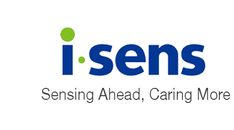
Continuous Glucose Monitoring
What Is Continuous Glucose Monitoring?
Continuous glucose monitoring allows automatic tracking of glucose levels throughout the day and night.1 Real-time continuous glucose monitors (CGMs) use a sensor inserted under the skin to measures interstitial glucose concentrations every few minutes. Users can track their glucose levels through a monitor connected to the sensor.
What Are the Benefits to Using CGMs?
As technology around glucose monitoring advances, CGMs are serving an increasingly important role in diabetes management.2 CGMs provide a number of benefits:
1) Real-time data. By continuously and automatically providing data on glucose level every 1-5 minutes, CGMs allow users to monitor their glucose levels without any action and can help make quick informed medical decisions.1,3
2) Alerts. CGMs can track trends in glucose levels and offer audible alerts if glucose levels become too high or too low.1,4 Although the device can sometimes give false alerts, this feature allows users to take actions to minimize time spent in hyperglycemic or hypoglycemic states.
3) Fewer finger sticks. The fingertip is the most common testing site for self-monitoring of blood glucose but also has a high pain sensitivity.5 Some CGMs do not require fingerstick calibration or confirmation, allowing ease of use by minimizing fingerstick testing.1
4) Data sharing. Current CGMs are able to share glucose level data with family members and friends, who can act as a safeguard in case the user is unable to respond to alerts.4 Additionally, data tracking and sharing can keep the health care team informed and help with diabetes management.6
5) Improved diabetes management. The American Diabetes Association (ADA) recommends the use of CGMs to diabetic adults who are on multiple daily injections, insulin pumps, or basal insulin, and are capable of safely using the devices by themselves or with a caregiver.2 The ADA recognizes that CGMs can help achieve glycemic targets in diabetes when used as a supplement to pre- and postprandial blood glucose monitoring.
Numerous studies have shown that CGMs can provide significant clinical benefits in diabetes management.7 A 2020 systematic review and meta-analysis of 15 randomized controlled trials (RCTs) comparing CGM vs. conventional therapy in both type 1 and type 2 diabetes found that CGMs showed modest improvements in hemoglobin (Hb) A1c, increased time spent in target glucose range, decreased time spent below or above target range, and improved glucose variability. Various other RCTs have demonstrated similar clinical benefits of using CGM vs. using blood glucose meter (BGM) alone.8–11
What Are the Obstacles to Using CGMs?
1) High Cost. Despite the benefits, cost is the biggest barrier to CGM use.1,4 Although its price varies largely depending on the provider, the average cost in the U.S. is approximately $15/day or $400-500/month.1,4,12 Strict insurance policies such as Medicaid may prevent certain individuals from receiving insurance coverage for CGMs, further restricting access for individuals from low-income or minority communities.4,13
2) Accuracy. As CGMs obtain glucose readings from the interstitial fluid through sensors in the subcutaneous tissue rather than the intravascular fluid, CGMs experience a slight physiological lag in obtaining real-time glucose readings.14 Additionally, some CGMs may still require the use of confirmatory BGM testing, although others have been approved for use without BGMs.1,15
|
References: |
(Disclaimer)
The content of this article is intended to provide a general information and knowledge on the subject matter. The views expressed in newsletters, articles, and blogs in the i-SENS USA website are not necessarily those of i-SENS Incorporated, i-SENS USA Incorporated or our publishers. Medical or nutritional information on i-SENS USA website is not intended to replace professional medical advice – you should always consult a specialist with any questions about your specific circumstances.





Add a comment